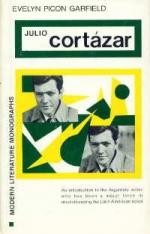|
This section contains 2,512 words (approx. 9 pages at 300 words per page) |

|
SOURCE: Roemer, Danielle M. “Graffiti as Story and Act.” In Folklore, Literature, and Cultural Theory: Collected Essays, edited by Cathy Lynn Preston, pp. 22-8. New York: Garland Publishing, Inc., 1995.
In the following essay, Roemer perceives the idea of graffiti as folk practice to be a key theme of “Graffiti.”
My focus here is both literary and folkloristic. I draw on the premises of graffiti as folk practice in considering a short story, “Graffiti,” by Julio Cortázar (1983).1 At the same time, I look to the shape and voicing of that story in an attempt to contribute to our understanding of the folk practice.
At the level of the story's plot, this intertextual tension is centered in issues of access. Living in a repressive police state, one in which personal expression is deemed a threat to those in power, a young man and woman begin a conversation whose utterances...
|
This section contains 2,512 words (approx. 9 pages at 300 words per page) |

|


